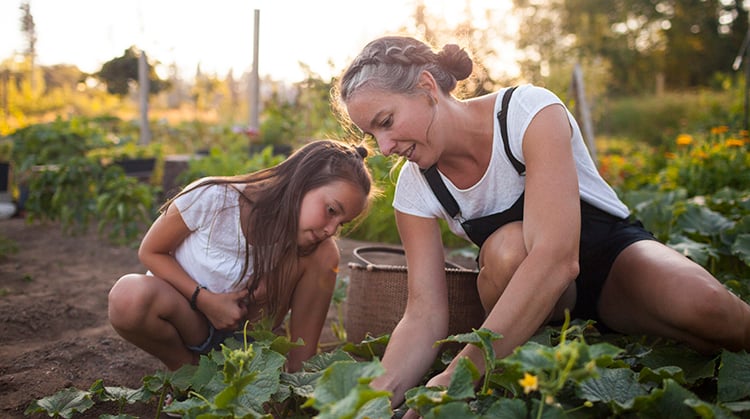
Gardening activities, such as digging, planting, weeding, mulching, and raking can lead to discomfort in your muscles and joints.
The following tips can help you minimize these aches and pains:
1. Get moving before you garden.
Take a 10-minute warm-up walk. Walking at a quick pace can help stretch your spine and limbs to get you ready to garden.
2. Change positions often to avoid stiffness or cramping.
Be aware of how your body feels as you work. If a part of your body starts to ache, take a break. Stretch that body part in the opposite direction, or switch to a different gardening activity. For example, if you've been leaning forward for a while and your back starts to ache, slowly stand up and gently lean backward a few times.
3. Use a garden cart or wheelbarrow to move heavy materials or tools.
Lift with your knees and stand close to the handles while moving a cart or wheelbarrow.
4. Give your knees a break.
Use knee pads or a gardening pad. If kneeling or leaning down to the ground causes a lot of pain in your back or knees, try using elevated planters for your garden. If kneeling on both knees causes back discomfort, try kneeling on one and keeping the other foot on the ground.
5. Maintain good posture.
Use good body mechanics when you pick something up or pull weeds. Bend your knees, tighten your stomach muscles, and keep your back straight as you lift or pull. Avoid twisting your spine or knees when moving things to the side. Instead, move your feet or pivot on your toes to turn your whole body.
6. Take breaks.
If you haven't done gardening or other yard work in a while, plan to work in short windows of time. Set a timer to take short breaks before you start feeling aches and pains.
7. Keep moving after you garden.
End your gardening session with some gentle backward bending of your low back. Wind down with a short walk, and perhaps do some light stretching.
If you are not able to manage aches and pains with these tips and your discomfort lingers, a physical therapist can help. Learn about the benefits of physical therapy.
Physical therapists are movement experts. They improve quality of life through hands-on care, patient education, and prescribed movement. You can contact a physical therapist directly for an evaluation. To find a physical therapist in your area, visit Find a PT.


